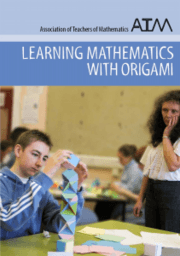Outline
Learning Mathematics with Origami: Dynamic Geometry Files
These files show some of the constructions and objects in the book "Learning Mathematics with Origami" published by the Association of Teachers of Mathematics. You can demonstrate them to learners or let them interact with them:
- What mathematical concepts does this construction use?
- What improvements could you make?
- How would you make this construction?
- How could you generalise this construction?
- Some constructions use the Sequence command (see https://www.geogebra.org/wiki/en/Sequence_Command). This powerful command lets you do a FOR … NEXT loop and assign the results to a LIST object. Not only does this save you repeatedly using the same user interface objects, you can also refer to the member objects in the list e.g. set the colour of all members, obtain the first or nth object, etc.
- Some dynamic geometry versions of origami models move the planes of “paper” away from their theoretical positions so that they do not overlap.
- In general, you can interact with construction by either dragging a point or a slider. The former gives you the feeling of direct manipulation. However the latter allows you to hide the point and animate the construction to an animated GIF file. You can easily change from the former to the latter: create a slider and define a point using the slider, then redefine the interactive point to be the point defined by the slider.
- You can use 2d views of planes other than the x-y plane. In a 3D window, right click a plane and select “Create 2d view from ...”.
